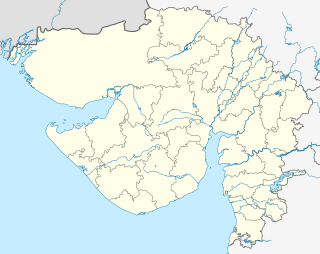Quadrature amplitude modulation (QAM) is the name of a family of digital modulation methods and a related family of analog modulation methods widely used in modern telecommunications to transmit information. It conveys two analog message signals, or two digital bit streams, by changing (modulating) the amplitudes of two carrier waves, using the amplitude-shift keying (ASK) digital modulation scheme or amplitude modulation (AM) analog modulation scheme. The two carrier waves of the same frequency are out of phase with each other by 90°, a condition known as orthogonality and as quadrature. Being the same frequency, the modulated carriers add together, but can be coherently separated (demodulated) because of their orthogonality property. Another key property is that the modulations are low-frequency/low-bandwidth waveforms compared to the carrier frequency, which is known as the narrowband assumption.

The Paschal Greeting, also known as the Easter Acclamation, is an Easter custom among Eastern Orthodox, Oriental Orthodox, Eastern Catholic, and Anglican Christians. It is also found among some Christians from liturgical Protestant denominations, such as certain Lutherans. In place of "hello" or its equivalent, one is to greet another person with "Christ is Risen!" or "The Lord is Risen!", and the response is "Truly, He is Risen," "Indeed, He is Risen," or "He is Risen Indeed".

Zaqatala is a rayon of Azerbaijan. The capital and principal town is Zaqatala. The rayon is an appendix of Azerbaijan territory wedged between Kakheti (Georgia) and Dagestan. It is served by the A315 road coming from Mingachevir and leading to the Georgian border at Lagodekhi as well as by a small airfield.
QAM is a digital television standard using quadrature amplitude modulation. It is the format by which digital cable channels are encoded and transmitted via cable television providers. QAM is used in a variety of communications systems such as Dial-up modems and WiFi. In cable systems, a QAM tuner is linked to the cable in a manner that is equivalent to an ATSC tuner which is required to receive over-the-air (OTA) digital channels broadcast by local television stations when attached to an antenna. Most new HDTV digital televisions support both of these standards. QAM uses the same 6 MHz bandwidth as ATSC, using a standard known as ITU-T Recommendation J.83 Annex B ("J.83b").

Vasna is a town and an Industrial Notified Area of the Borsad municipality in Anand district in the Western Indian state of Gujarat.

Gams is a municipality in the Wahlkreis (constituency) of Werdenberg in the canton of St. Gallen in Switzerland.

Qızılhacılı is the most populous village and municipality in the Goranboy Rayon of Azerbaijan, except for the city of Goranboy. The village has a population of 6,758; the municipality has a population of 8,380. The municipality consists of the villages of Qızılhacılı, Balakürd, and Ballıqaya.

Coni is a village and municipality in the Lerik Rayon of Azerbaijan. It has a population of 421. The municipality consists of the villages of Coni and Tülü.

Günəşli is a village and municipality in the Lerik Rayon of Azerbaijan. It has a population of 1,022. The municipality consists of the villages of Günəşli and Babagil.

Məlhəm is a village and municipality in the Shamakhi Rayon of Azerbaijan. It has a population of 1,378.

Balaca Həmyə is a village and municipality in the Siazan Rayon of Azerbaijan. It has a population of 934.

Böyük Həmyə is a village and municipality in the Siazan Rayon of Azerbaijan. It has a population of 1,752.

Sayad is a village and municipality in the Khachmaz Rayon of Azerbaijan. It has a population of 1,247. The municipality consists of the villages of Sayad and İlxıçı.

Qaraçı is a village and municipality in the Khachmaz Rayon of Azerbaijan. It has a population of 785. The municipality consists of the villages of Qaraçı, Qaraqaşlı, Laman, and Çaxmaqlı.

Ambu is a village and municipality in the Lerik Rayon of Azerbaijan. It has a population of 791. The municipality consists of the villages of Ambu, Osnağaküçə, and Xəlfəkücə.

Noda is a village and municipality in the Lerik Rayon of Azerbaijan. It has a population of 1,215. The municipality consists of the villages of Noda and Aşağı Bilnə.

Əlik is a village and municipality in the Quba Rayon of Azerbaijan. It has a population of 1,069. The municipality consists of the villages of Əlik, Cek, Haput.
Böyük or Boyuk may refer to:







